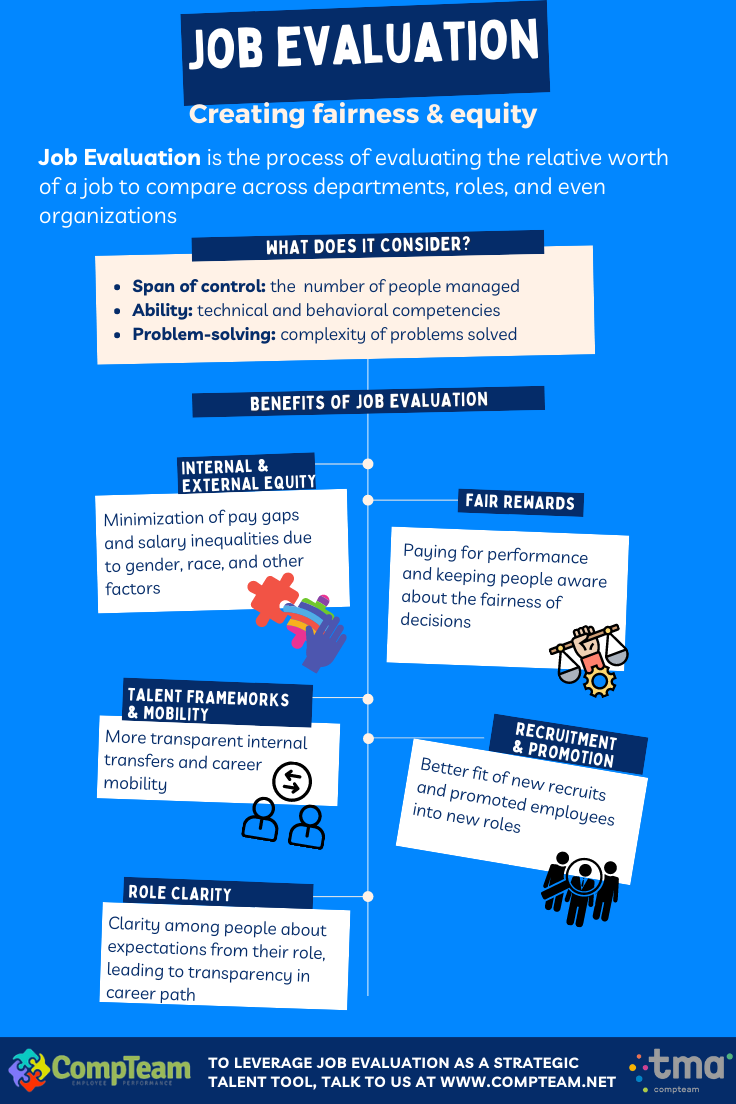Job Evaluation: Creating Fairness & Equity
Job evaluation is simply defined as the process of determining the relative worth of a job. It is a system that allows for jobs across functions and departments, and even organizations to be compared. For example, what would be the seniority level at which a Fortune 500 company would recruit a Vice-President from a startup? Or at what level should an individual contributor be brought in, for a cross-functional move to another department?
There are multiple tools available to evaluate jobs. However, Gradar is one of the tools that is comprehensive and yet, easy to understand. Fast and inexpensive, it even automates the matching with benchmarking jobs, to reduce the effort needed. Typically, to carry out job evaluation, it considers three factors:
1. Span of control: Number of people managed and the size of teams handled. For example, managing self, managing teams, managing others and managing business
2. Ability: Technical or functional knowledge needed for the job, along with the behavioral competencies
3. Problem-solving: Complexity of problems solved and organizational responsibility shouldered
There are multiple benefits that accrue from investing in a job evaluation exercise:
Internal and external equity: Salary inequalities can be eliminated through consistency in how people are being paid. By comparing jobs internally and externally, pay gaps can be minimized and a culture of pay parity can be maintained.
Fair rewards: Paying for performance can be successfully implemented by making sure that all comparable roles are compensated comparably. In addition, by making people aware of job families and pay grades, any discontent around the fairness of rewards and compensation decisions can be contained.
Talent frameworks and mobility: Intra-organization transfers and career mobility can be made more transparent through job evaluation. People can be aware of how any vertical, horizontal, or diagonal career moves compare with what they are doing right now.
Recruitment and promotion: At the time of recruiting new employees, their fitment into the organization can be managed better through a job evaluation matrix. For promotions as well, clarity around the abilities and problem-solving skills needed is available so that managers can not only make the right decisions but also effectively convey them to people.
Role clarity: People are clearer about their own roles as well as available career paths. They have a fair opportunity to evaluate the ‘worth’ of their current roles and understand the expectations for the current roles as well as future roles.

Job evaluation is a great tool to strike a balance between accountability and the ability of people and to gauge whether a job is even ‘doable’ or not. Gone are the days when it was thought of as a rewards tool. Now, it is increasingly being seen as a complete talent tool with companies leveraging it to make smarter investments in unlocking human capital.
Are you ready to optimize your talent and capability through job evaluation?
About the Author
Sumit Singla
Founder of eleventHR Consulting.
Sumit has been working in HR & HR consulting roles for 16+
years across sectors and verticals and specializes in
organization design, wellbeing, storytelling & design thinking, and performance management. In his career with consulting firms such as Aon, Deloitte, and Accenture, he has successfully led programs aimed at total HR transformation for clients.
Recently, as Associate Director for India Consulting at Deloitte, he worked with clients on cultural transformation and HR process and policy design. He also organized and spoke at conferences and events about a variety of topics relevant to HR today.
Now self-employed, he works with clients across the globe on a variety of HR solution areas.






